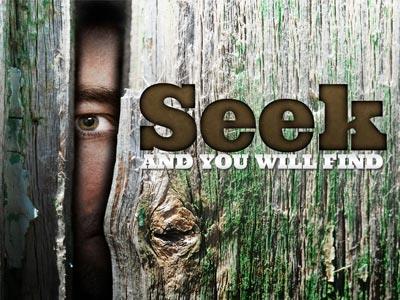-
The Kingdom Of God
Contributed by Graeme Lamb on Nov 28, 2017 (message contributor)
Summary: The parable of the sower and the mustard seed from Mark’s gospel, and what they reveal to us about God’s kingdom and God’s world
Becoming a father for the third time over the last couple of months has reminded me again of the wonder of creation. Throughout the natural world, in humanity and in animals and plant life, the same story can be seen – of amazing growth and beauty coming out of something that begins so small. This is true whether from a fertilised egg to a fully-grown mature human being, from a small sapling or seed to the largest of oak trees, or even the beauty of a caterpillar when then cocoons into the most beautiful butterfly.
Within the pantheon of the created order there is this constant cycle of new life and growth, sometimes stunted or damaged by environmental circumstances or humanity’s attempted control of the world, but on the whole left to its own devices to inspire, beautify and populate this wonderful world we live in.
The Bible itself is full of this imagery, which is no surprise as the Bible is the story of the creator God, the beginnings of his creation, and his first interactions with his created order - the story fundamentally of His world and the people in it. From the creation of the world comes the complicated history of humanity and its relationship with both the created order and its creator.
Our readings today reflect this theme – particularly those readings from Ezekiel and from Mark’s gospel. The verses in Ezekiel follow on from an allegorical reading of the invasion of Jerusalem by the Babylonians at the time of Nebuchadnezzar, overlapping the 7th and 6th centuries B.C. and the occupation of Israel and the lack of integrity shown by some of the kings of Israel. The reading then presents us with this image of new growth in the form of God’s promise to his people. This image of new growth is more than just a symbolic picture of the restoration and the renewal of Israel, and actually is one of the Messianic promises of this story, a promise of a Saviour, and looking forward to his coming.
Contrasted with this are the parables of the growing seed and the mustard seed in Mark’s gospel, which follow on from the parable of the sower earlier on in the same chapter, the three parables broken up in Mark’s account by the imagery of the lamp on the stand giving light to those around.
Whereas the promise from Ezekiel refers to the coming of Jesus and the fact that he would draw others to himself, this imagery from Mark, which echoes the imagery of Ezekiel, is of the words of Jesus himself, comparing the growth of God’s kingdom and God’s church to that of a seed. Jesus uses the imagery of such a small seed leading to such incredible growth as a sign of the growth not only of the kingdom of God in terms of numbers of people, but also of the growth of God’s kingdom within us.
Both passages use the imagery of the branches of the tree being so large that birds are able to perch in the branches.
The parable of the growing seed is an interesting one because it is only here in Mark’s gospel that we find it, and the parable seems to suggest that the gospel has a power of its own that is independent of whether anyone is trying to tend or feed it. The growth of the seed is seen as something of a mystery, something that many of us could relate to as we remember the childlike wonder of growing seeds in our youth. I remember my eldest son planting seeds as a project, and continually coming back to them to see their growth, which was so slow as not to see with the naked eye, but steady and sure nonetheless.
One common interpretation of the parable of the mustard seed is to see it as a parable of the small beginnings of the church, with just one leader and 12 disciples. Of course, the fact that the one leader is the Son of God is not an insignificant fact, but perhaps this parable does point from the relative smallness of the beginnings of Christianity to its rapid growth and spread throughout the world, the mustard seed of the church which grows to be the largest of trees with its branches spread wide and full of the birds of the air. The imagery of the birds in the branches may refer to a great kingdom which gives protection to its subject nations, or it may refer to the Gentiles being brought into God’s kingdom, and perhaps our interpretation will depend on our starting perspective, of either Jew or Gentile.
Set against this is the parable of the growing seed, which is really about Jesus saying that although the his ministry wasn’t bringing in the kind of kingdom of God that people were expecting, that it was preparing for God’s promised harvest, which we have already seen foretold in the words from Ezekiel, and in Jesus’ imagery of the sickle cutting the harvest, which comes from Joel chapter 3.

 Sermon Central
Sermon Central



